The third floor of the new Peabody is soon to be home to our new Living Lab—the reimagined version of our former and beloved Discovery Room. This vibrant, interactive space will contain several live animal displays plus a cornucopia of assorted objects from across our collections, arranged in exciting cabinets and exhibits like the ones seen below.
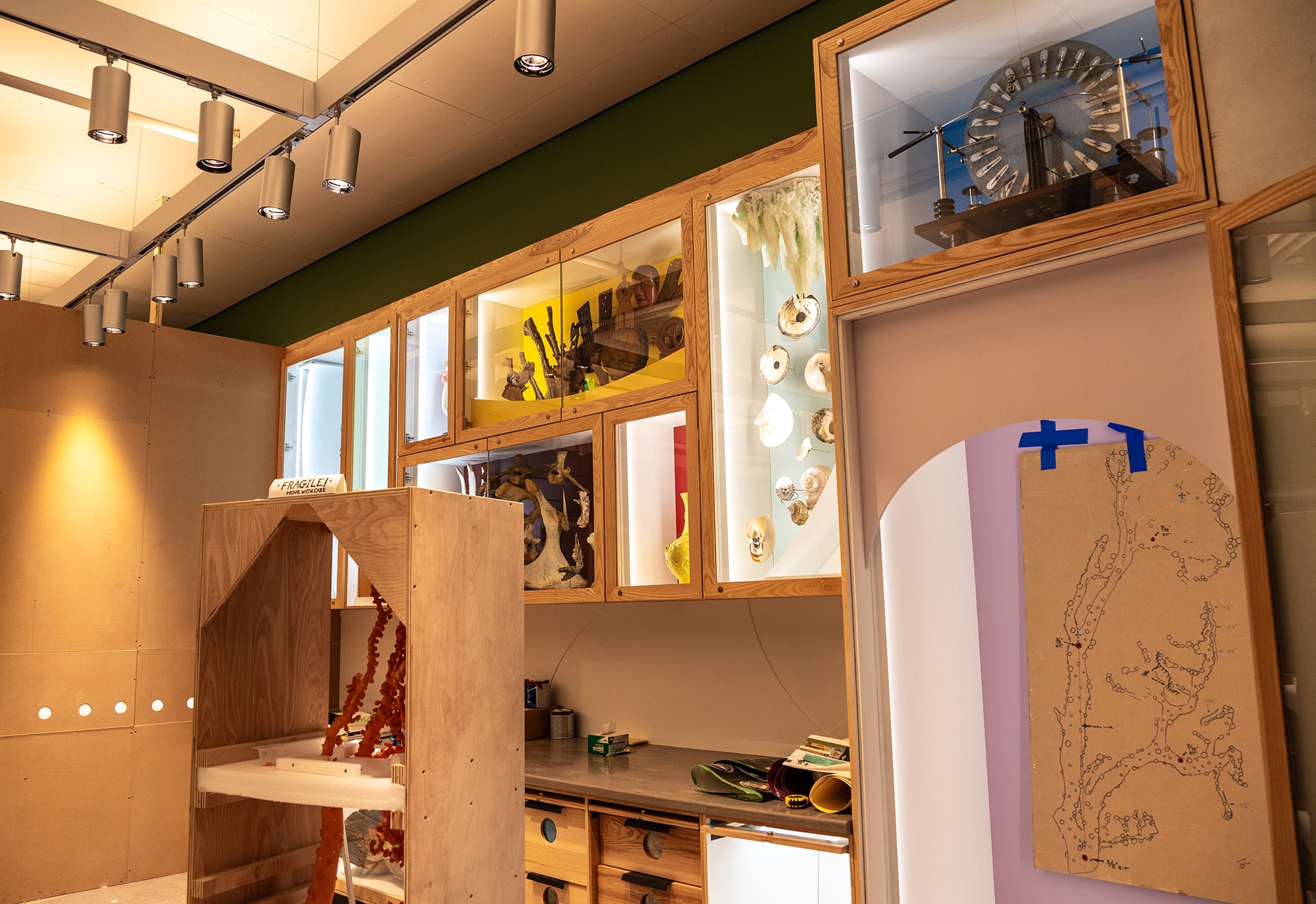
A new addition to this space is a large, iconic treasure from our Invertebrate Zoology collection—an impressive deepwater coral called Paragorgia arborea. This specimen, typically found between depths of 200-1300 meters, was collected circa 2000-2005 in the North Atlantic Ocean during a groundfish survey conducted by the Northeast Fisheries Science Center at Woods Hole, Massachusetts.
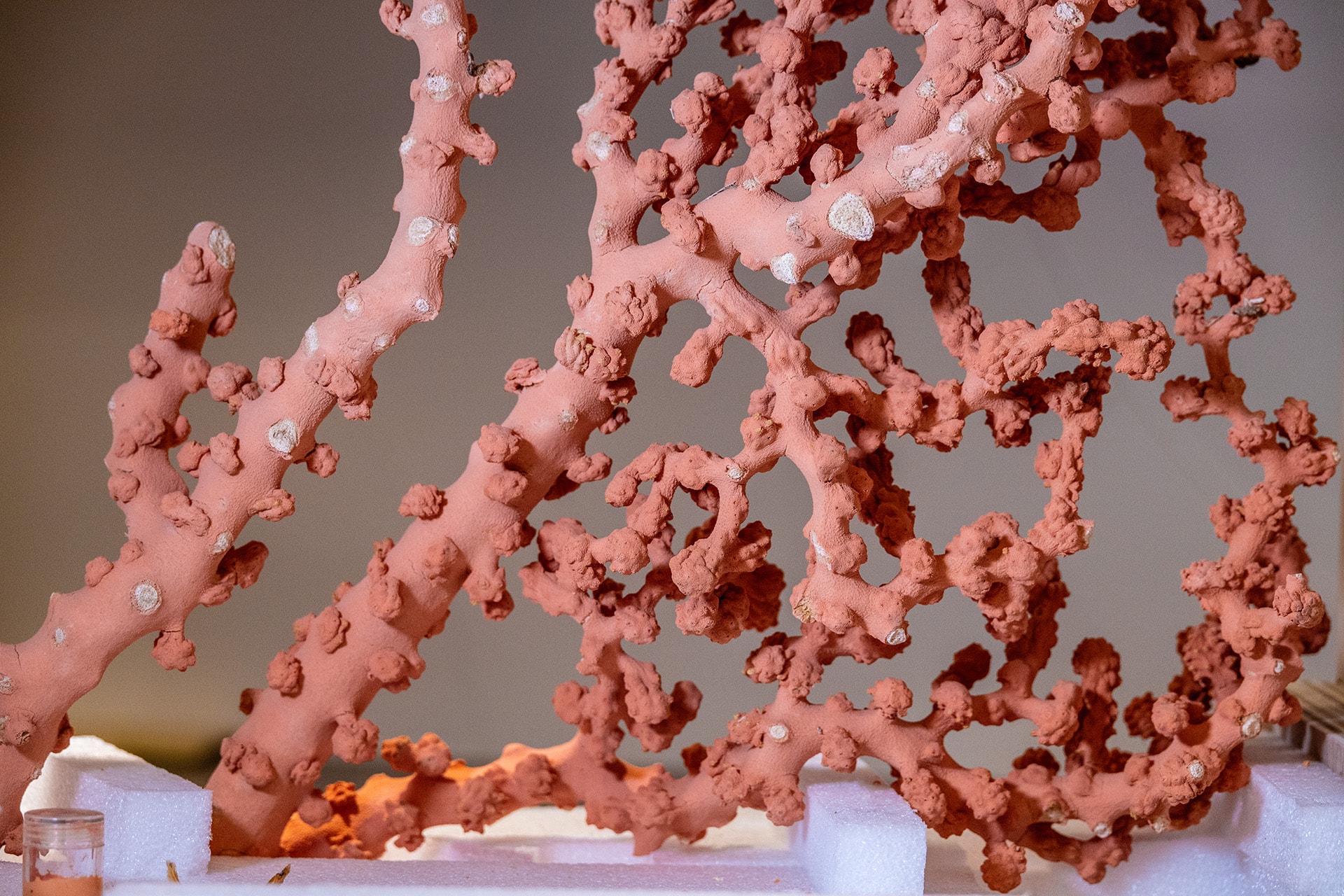
Known affectionately as the bubblegum coral for its structure and bright red, white or pink hues, Paragorgia arborea is a colonial organism. In each of its small, bulbous branch structures there would be a small polyp; the collection of polyps secretes the entire structure. The color comes from pigments locked inside microscopic mineralized elements known as sclerites. If you want to learn more about sclerites and other invertebrate colonial organisms, be sure to browse our Virtual Microscopy collection!
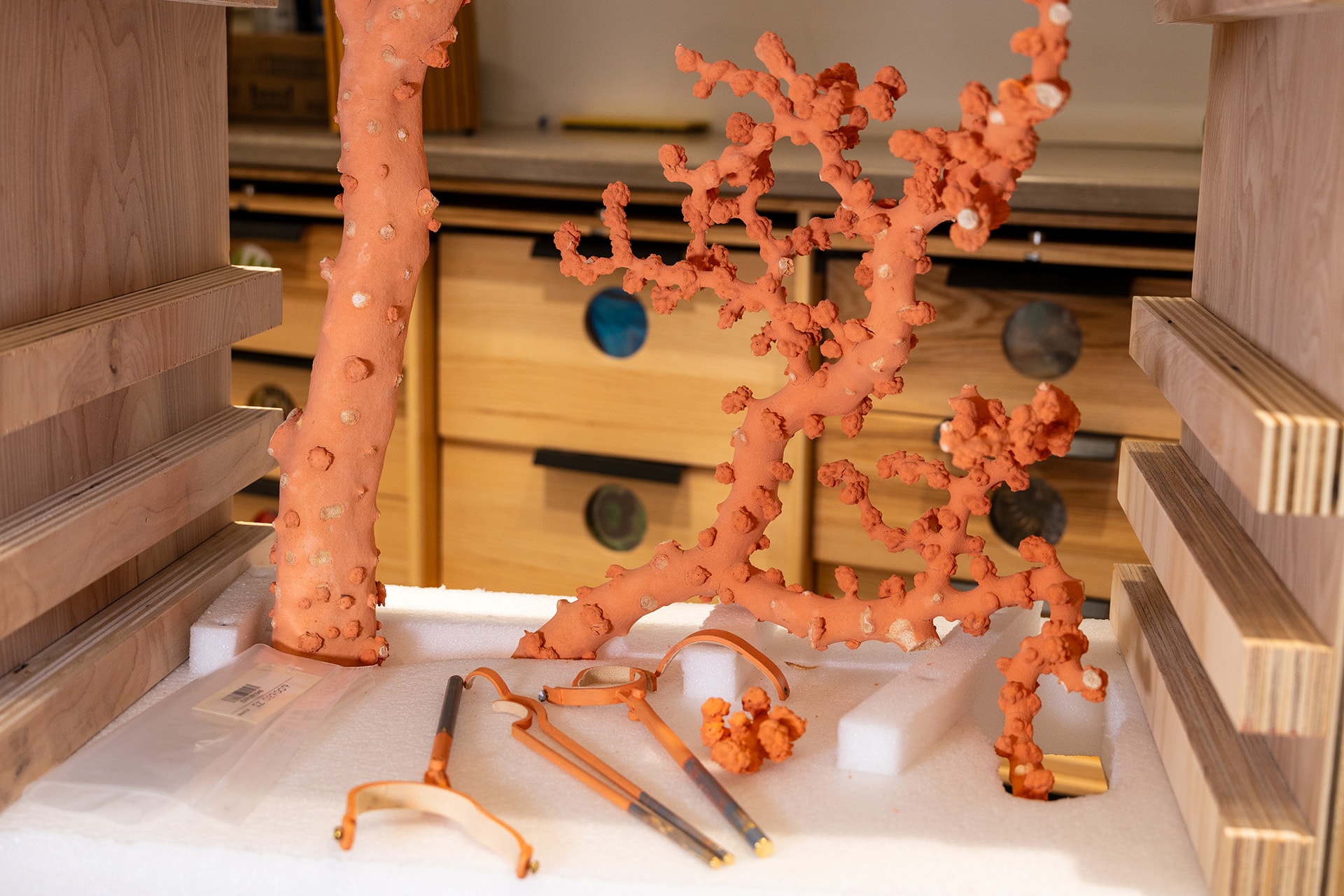
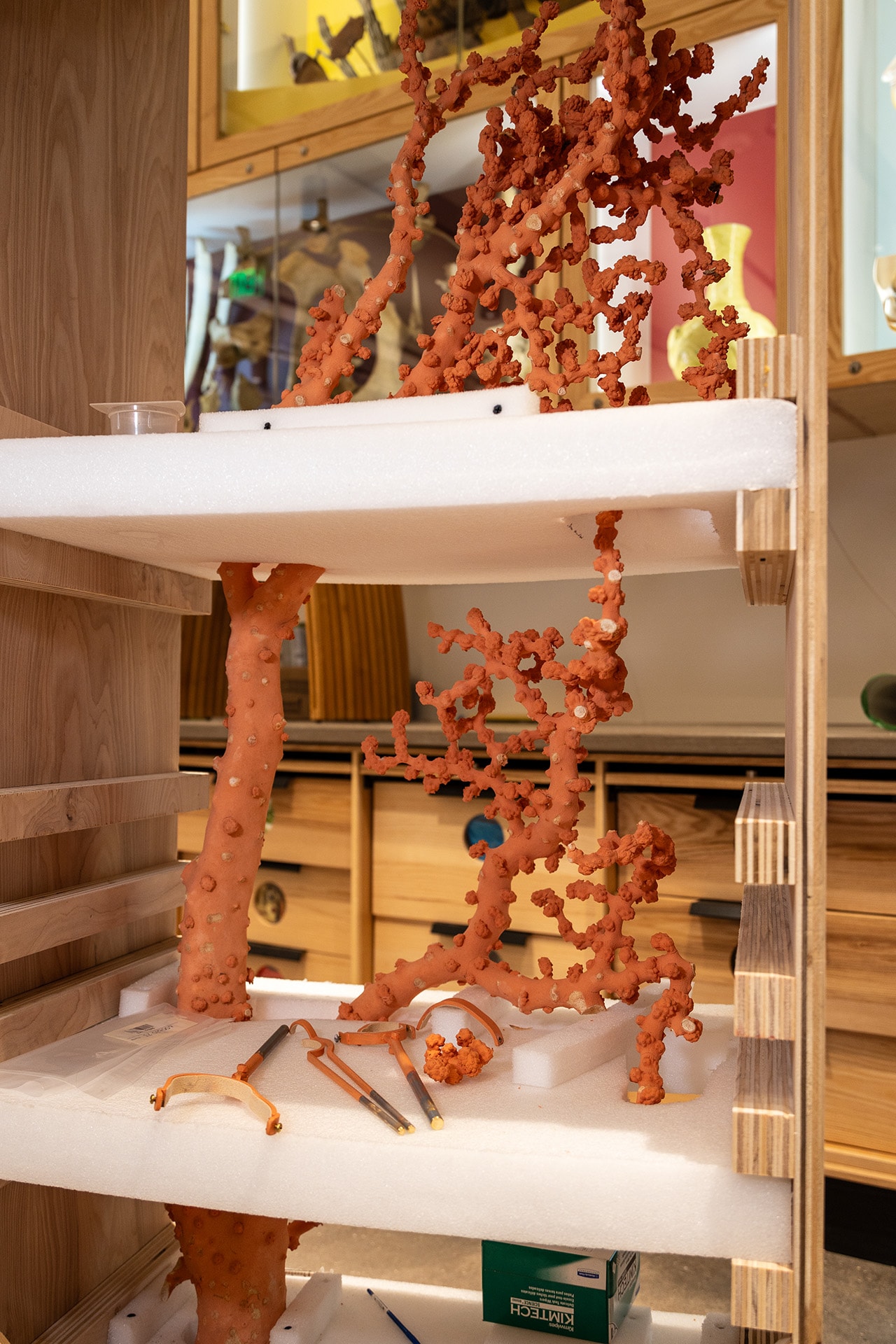
Standing over four feet tall, this coral is extremely fragile and has been stored in a specially-built padded wooden crate for transportation. For installation, a team of scientists, designers and technicians carefully moved the object to its permanent home in a beautiful wood-framed case. Once custom shelving is installed alongside the coral, it will share the case with other specimens chosen to complement its form and color.
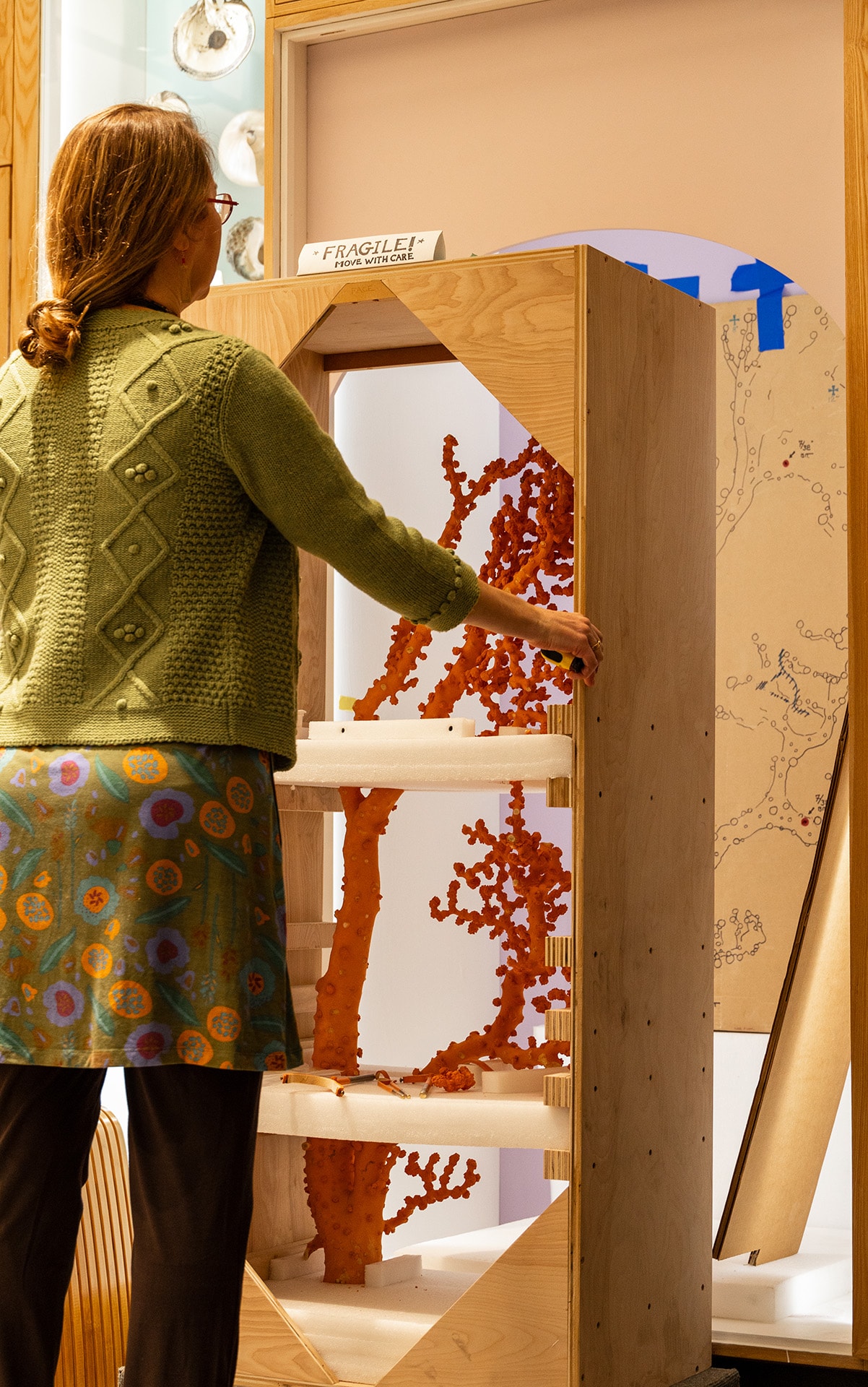
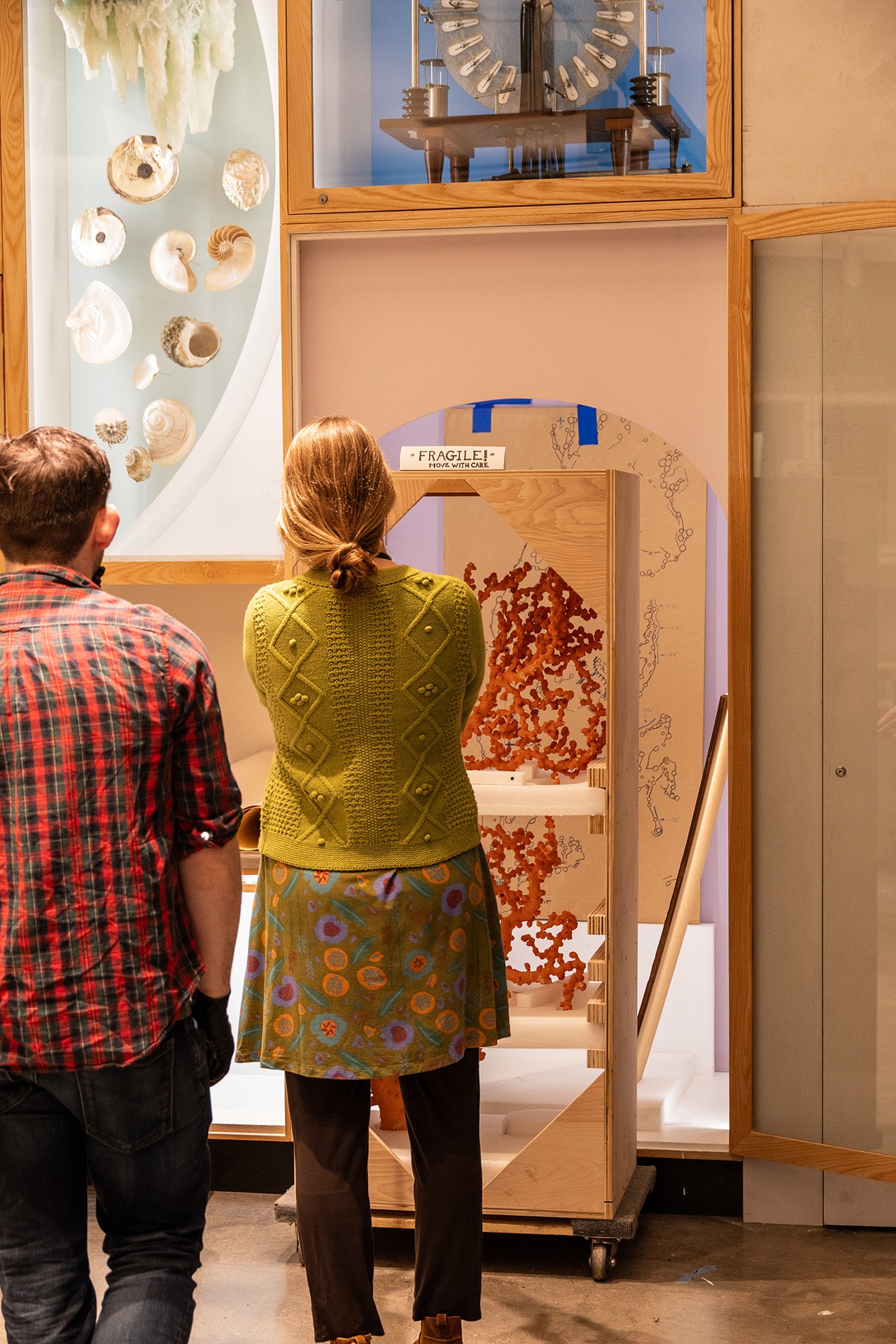
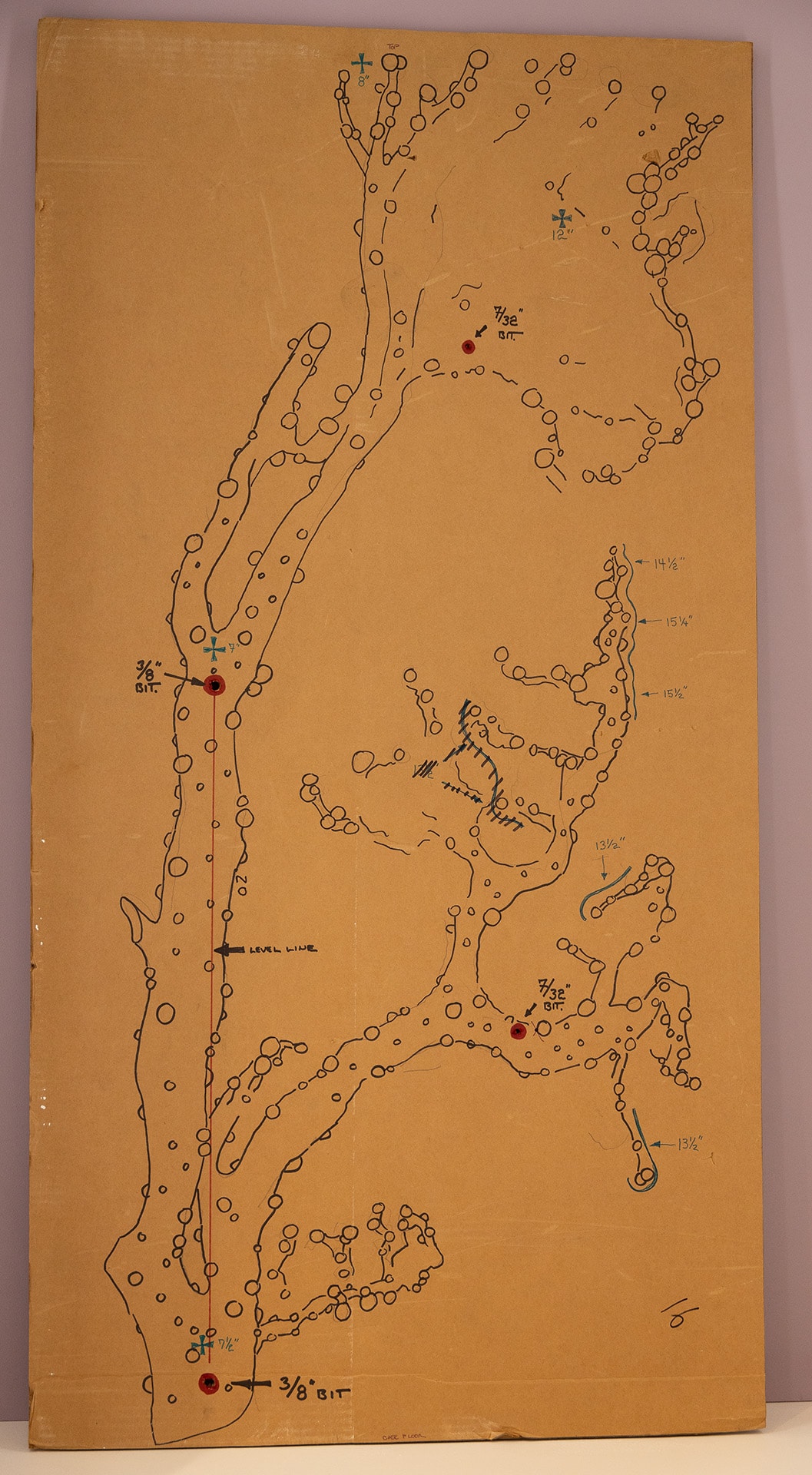
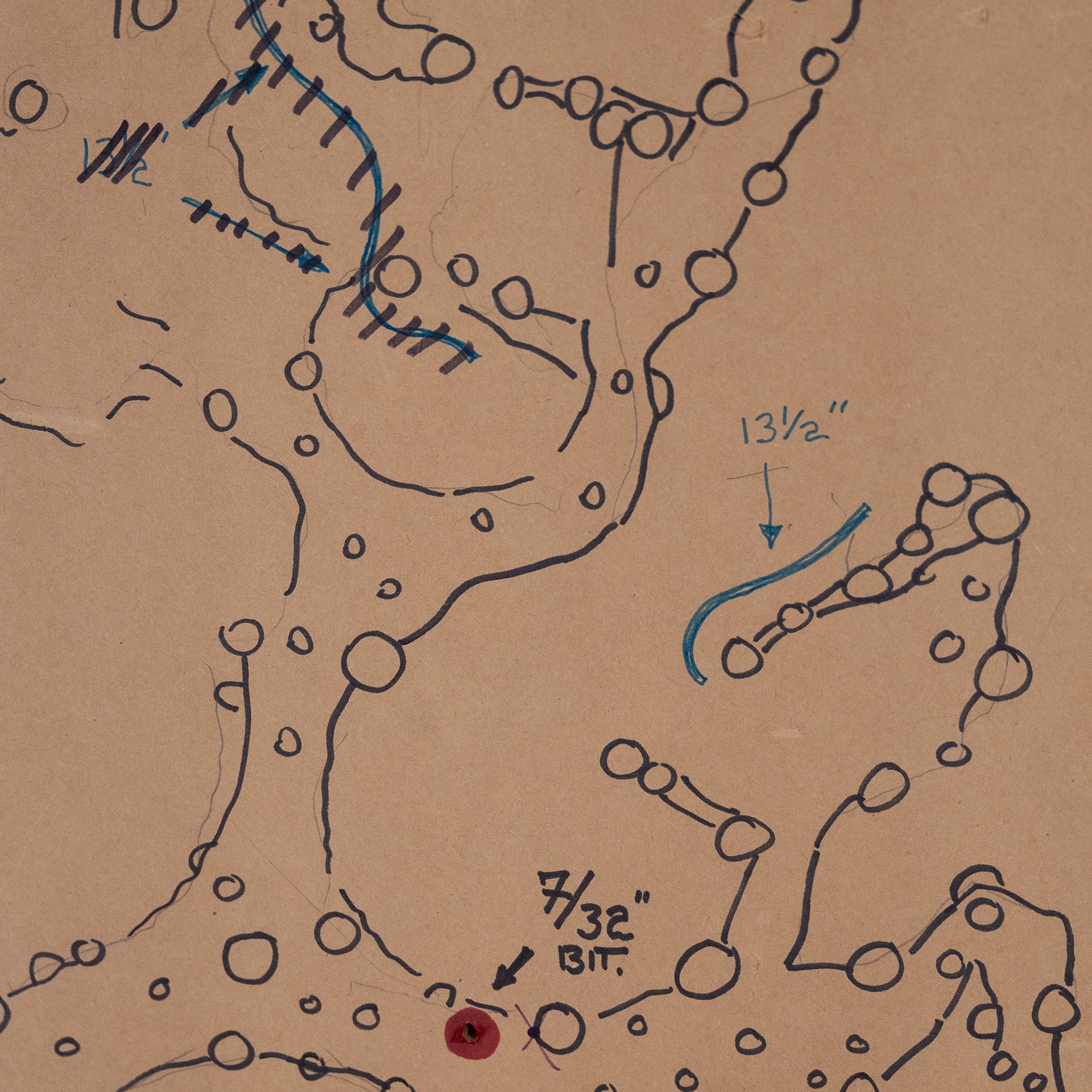
There is no room for error with this installation, so an accurate outline of the coral was used as a template. This guarantees the mounting hardware is in the correct position and will support the delicate geometry of the specimen.
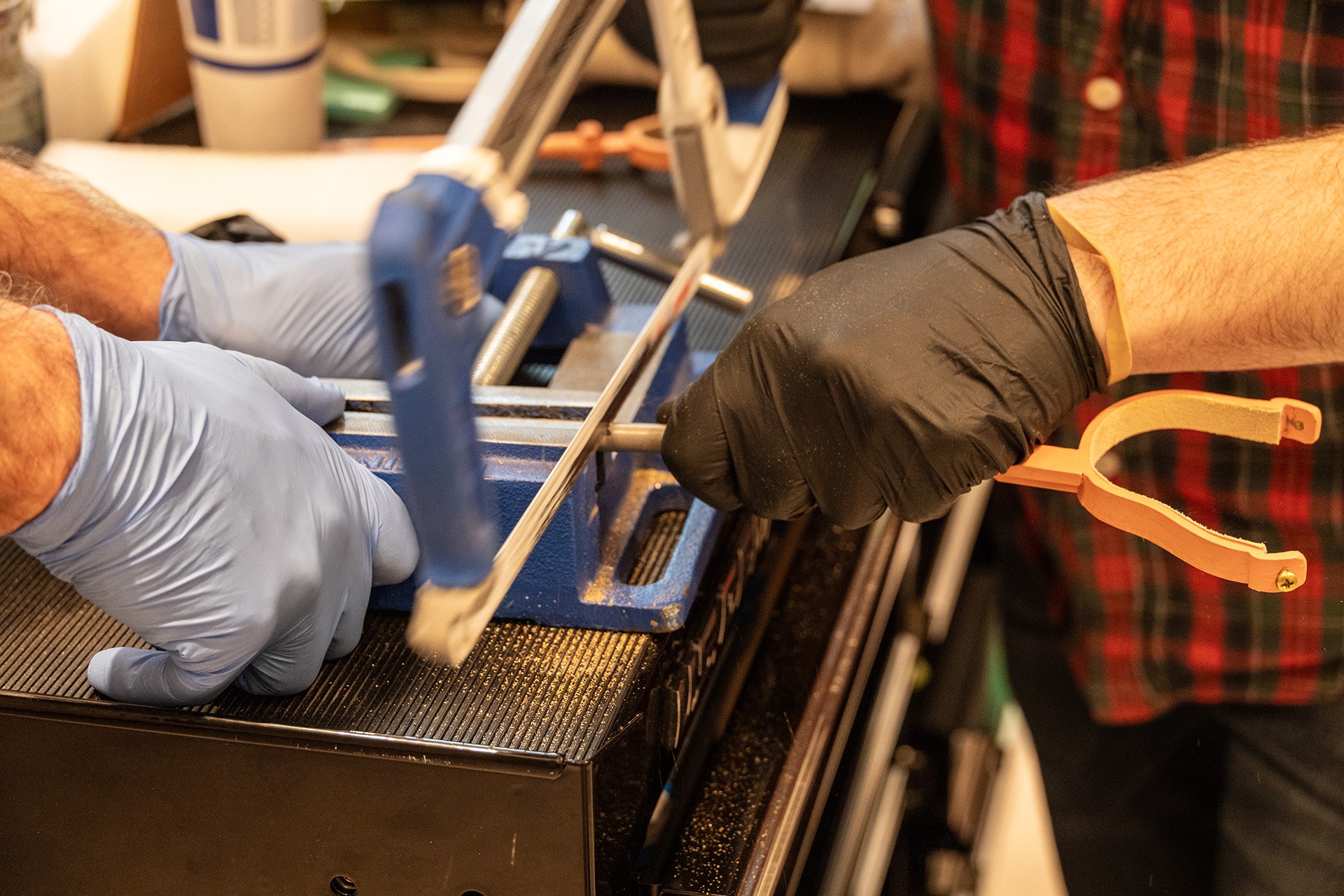
Each mounting bracket is handmade—cut, shaped and painted to match the contours of an object perfectly so as to appear invisible when on display.
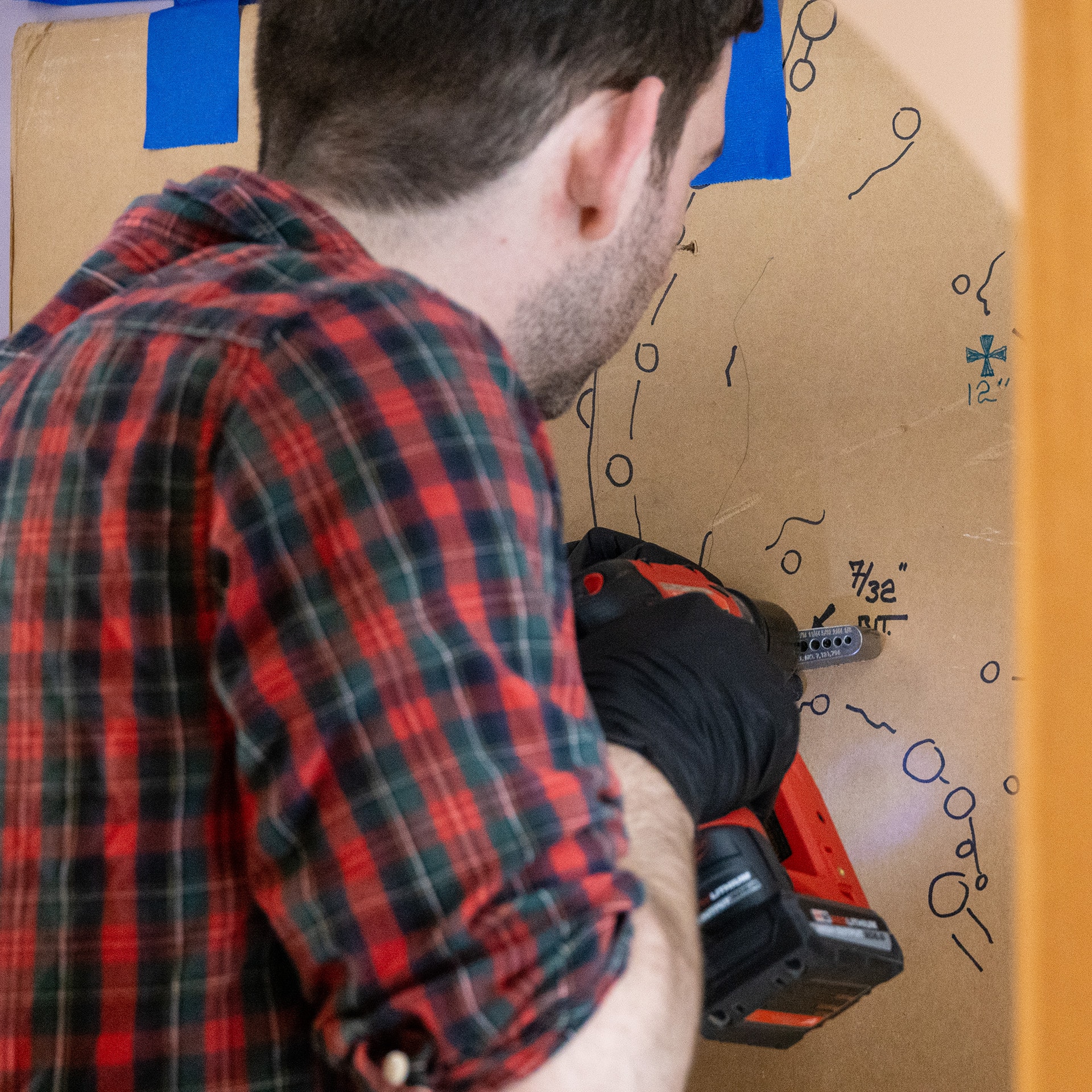
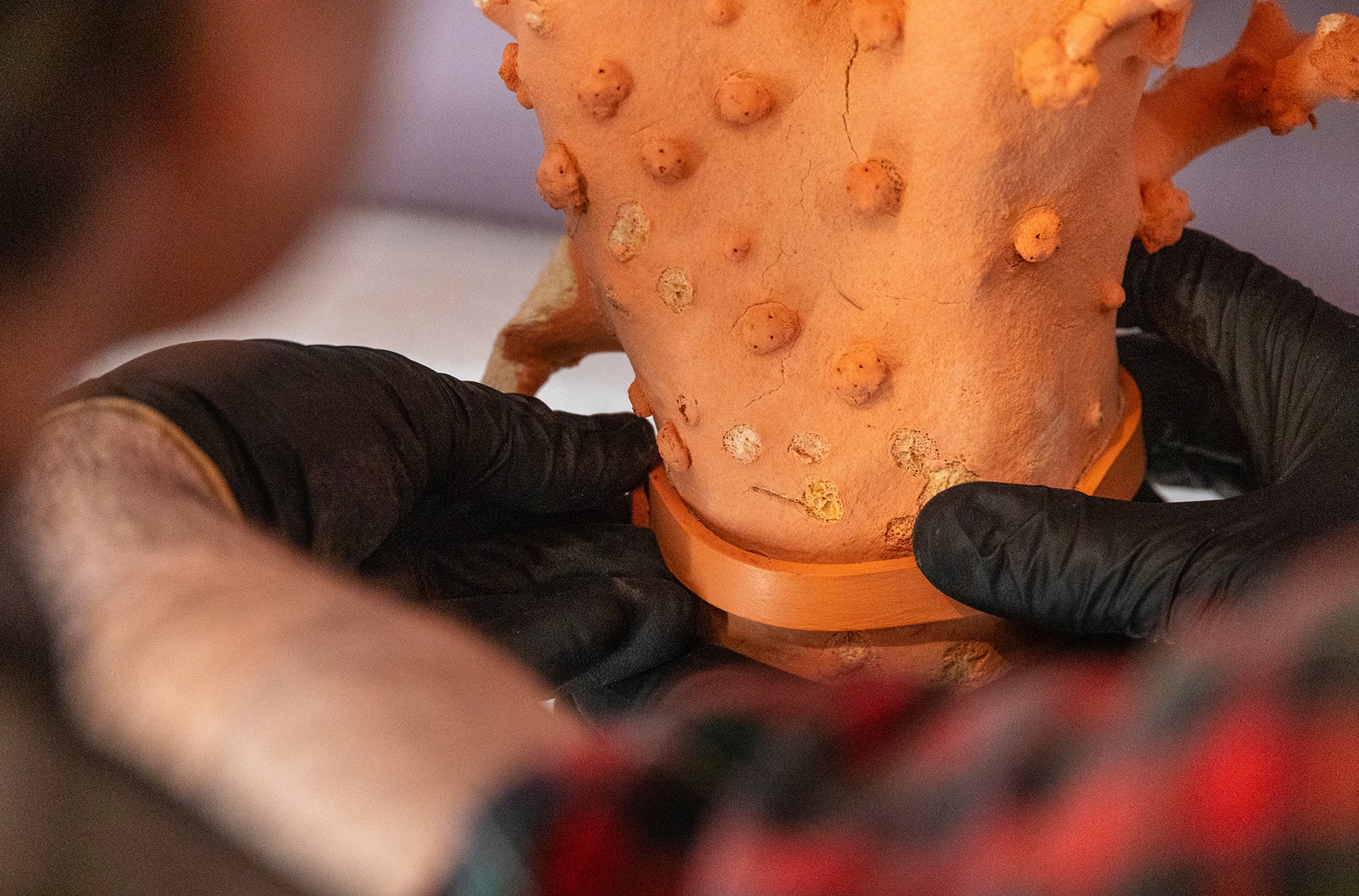
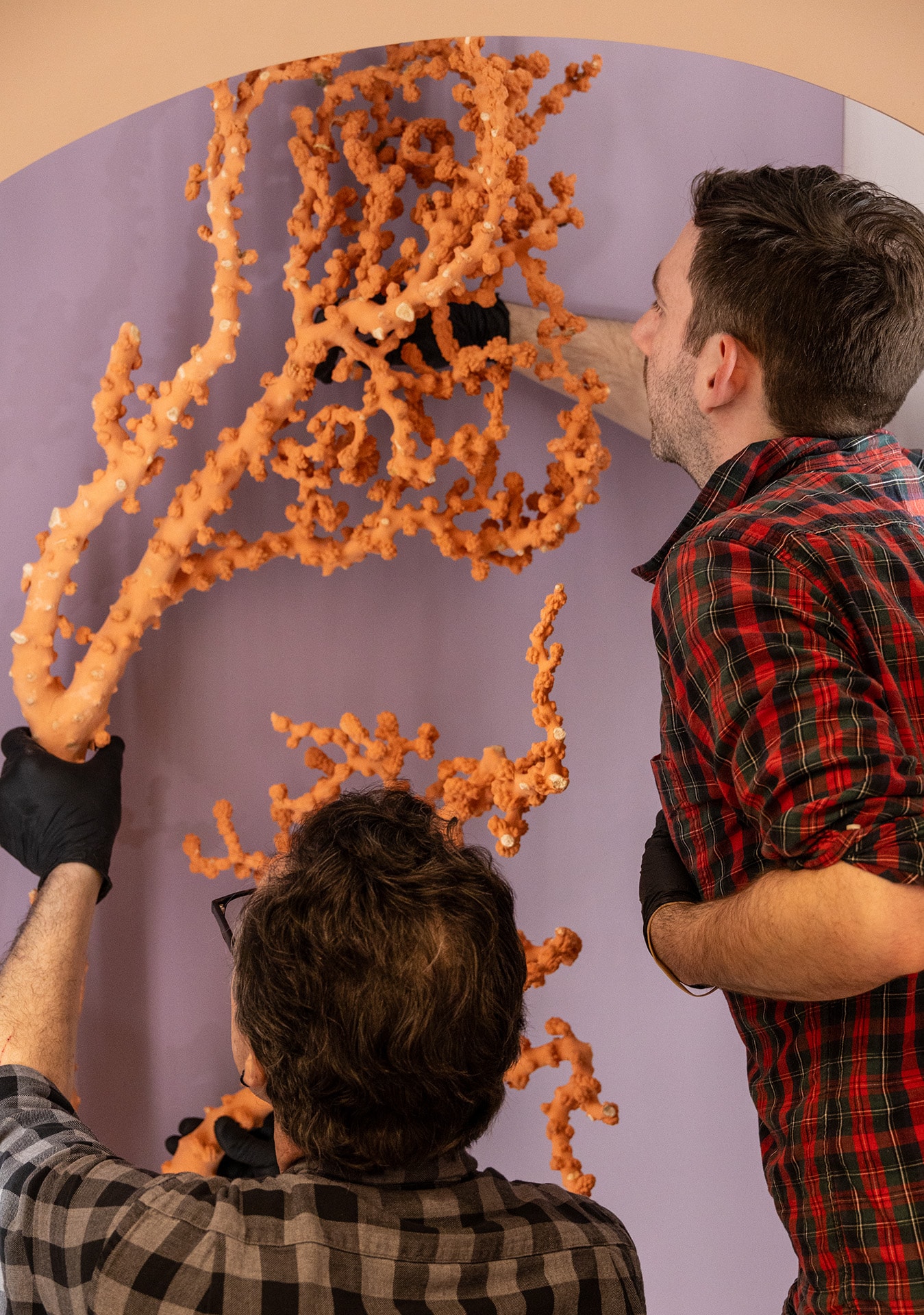
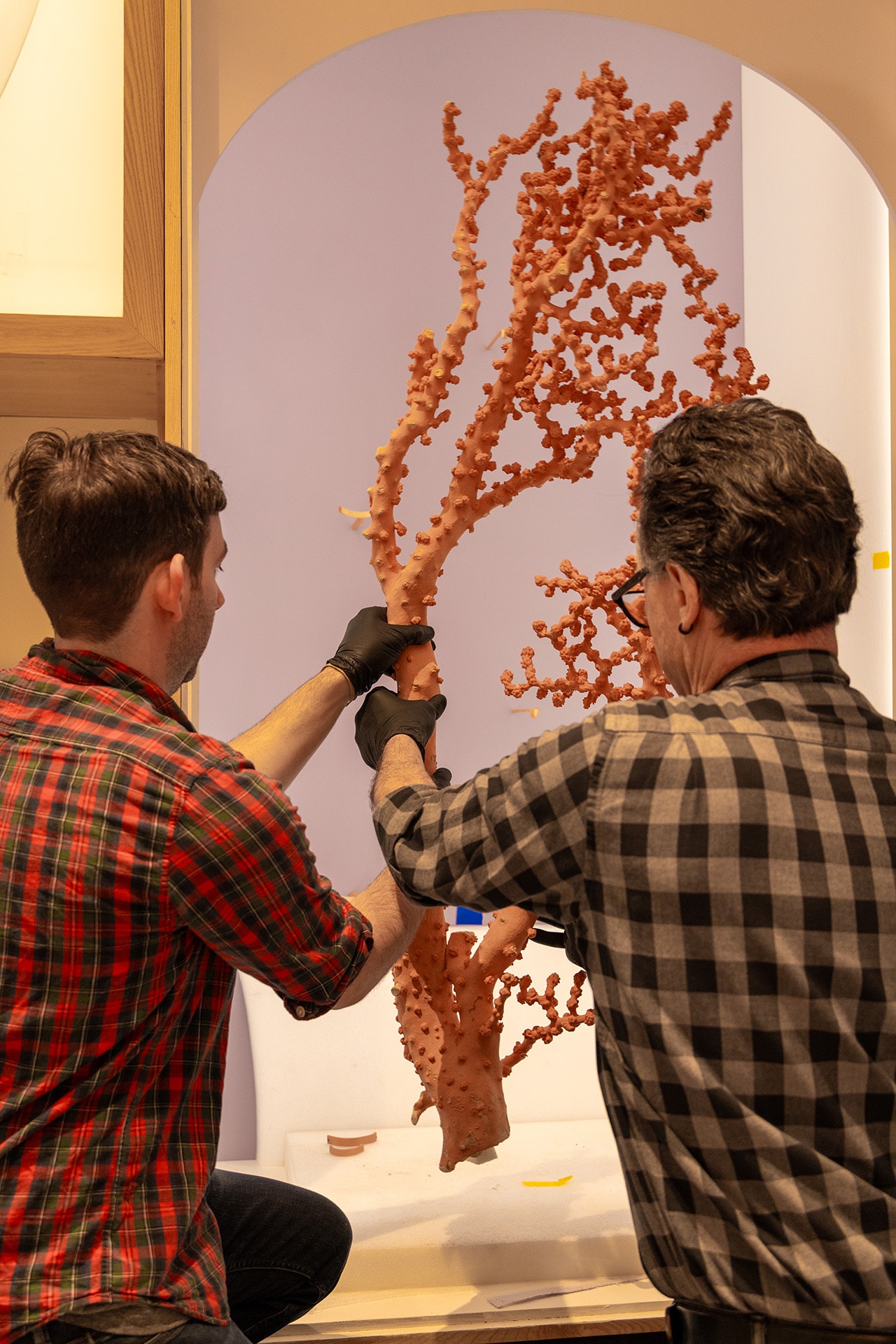
Bubblegum corals can live a long time and become massive colonies—the one pictured is about a third of what the original colony was as a whole! These and others form critical habitats for a myriad of invertebrates and fishes.
Commercial fishing with bottom trawls can make short work of coral aggregations, and this conservation concern was one which contributed to President Obama designating this specimen’s habitat—the Northeast Canyons and Seamounts Marine National Monument—as an official US National Monument in 2016.
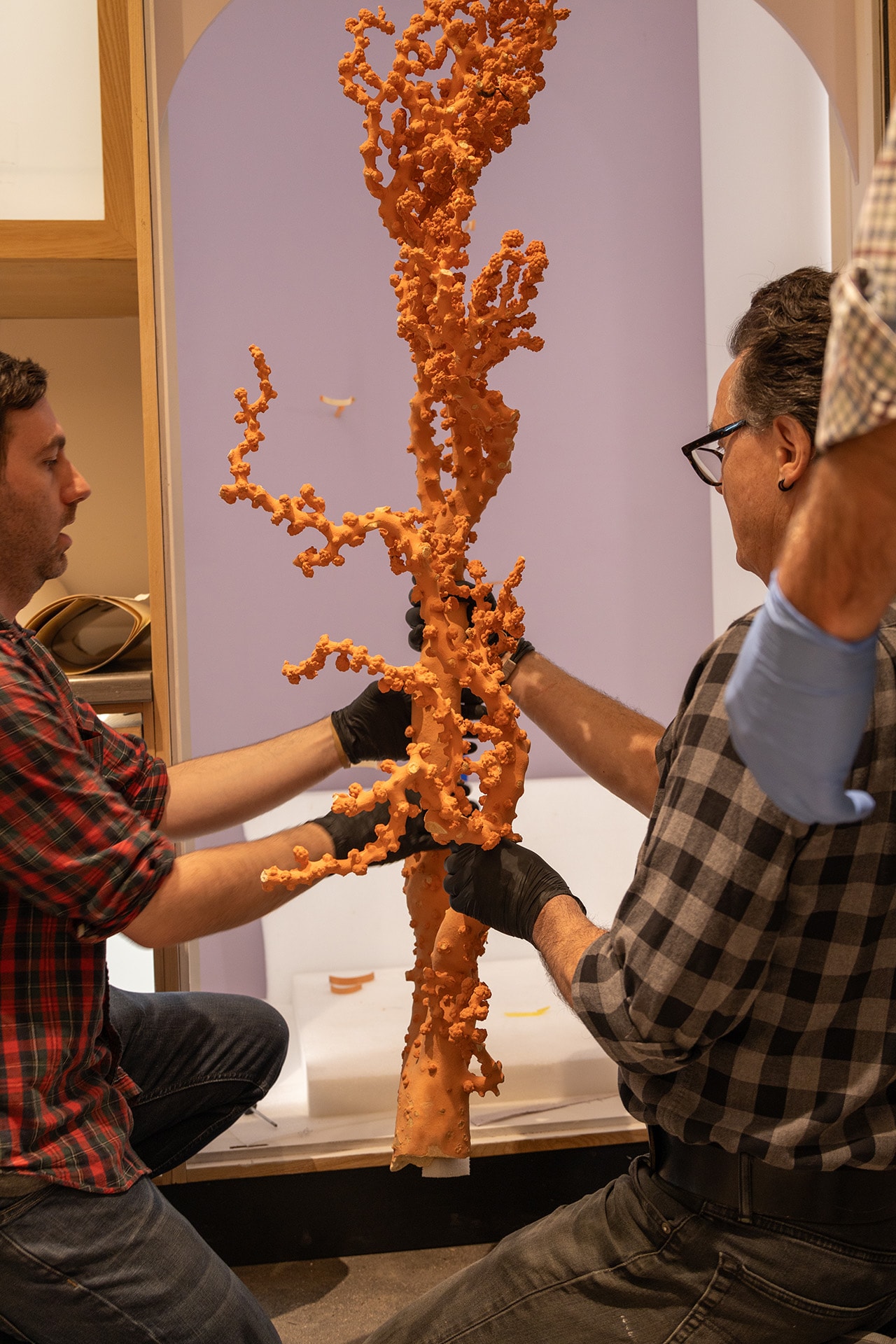
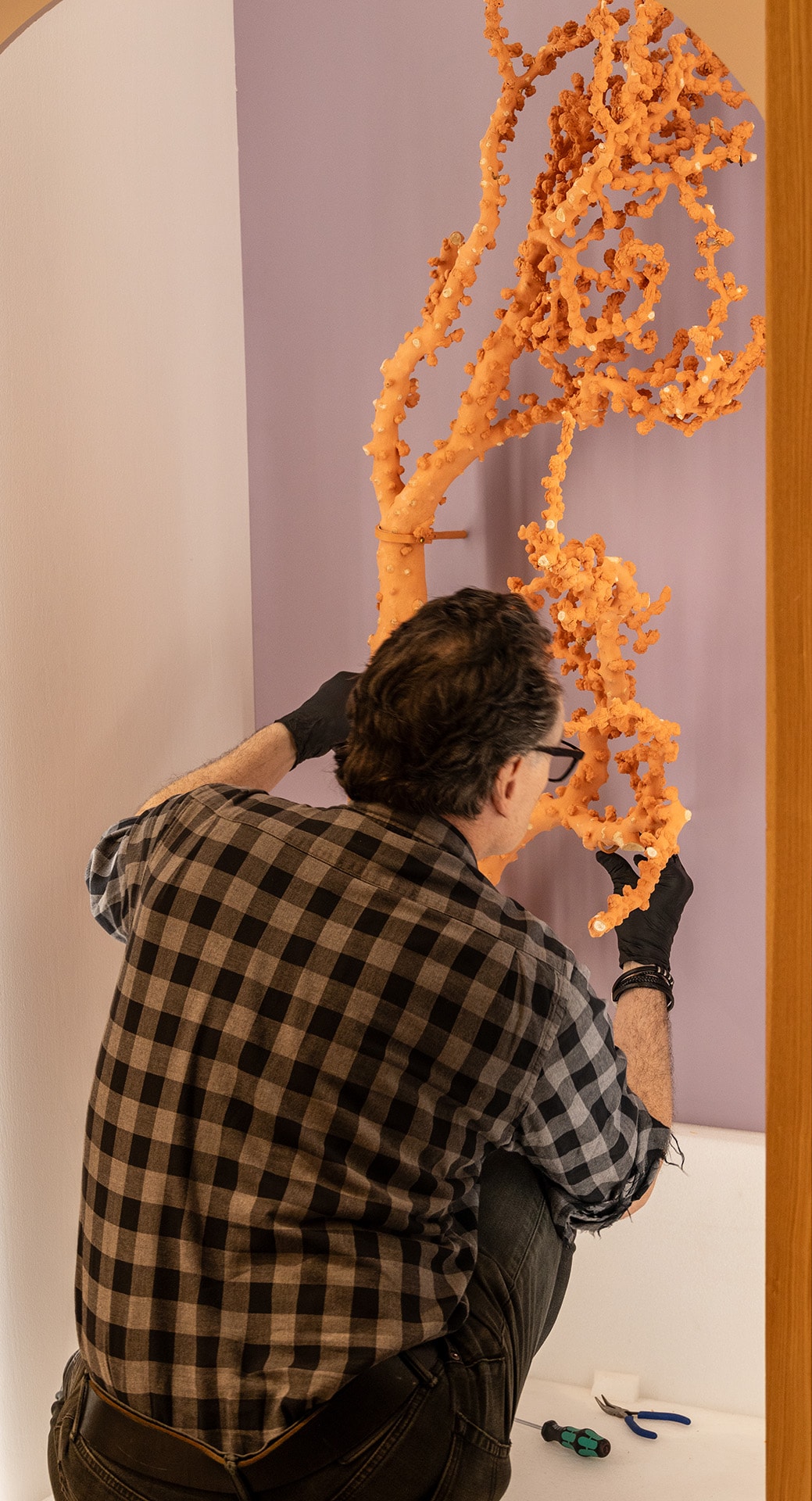
...

